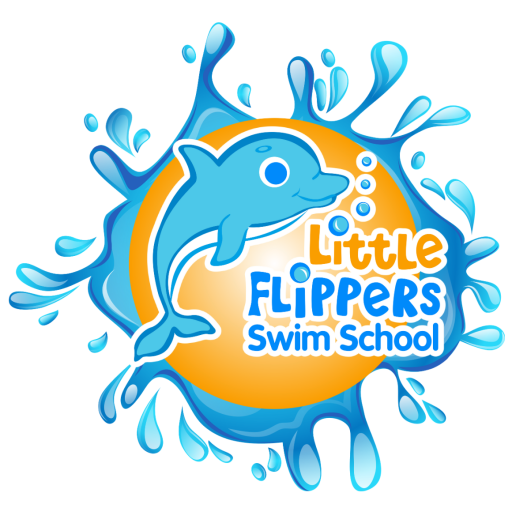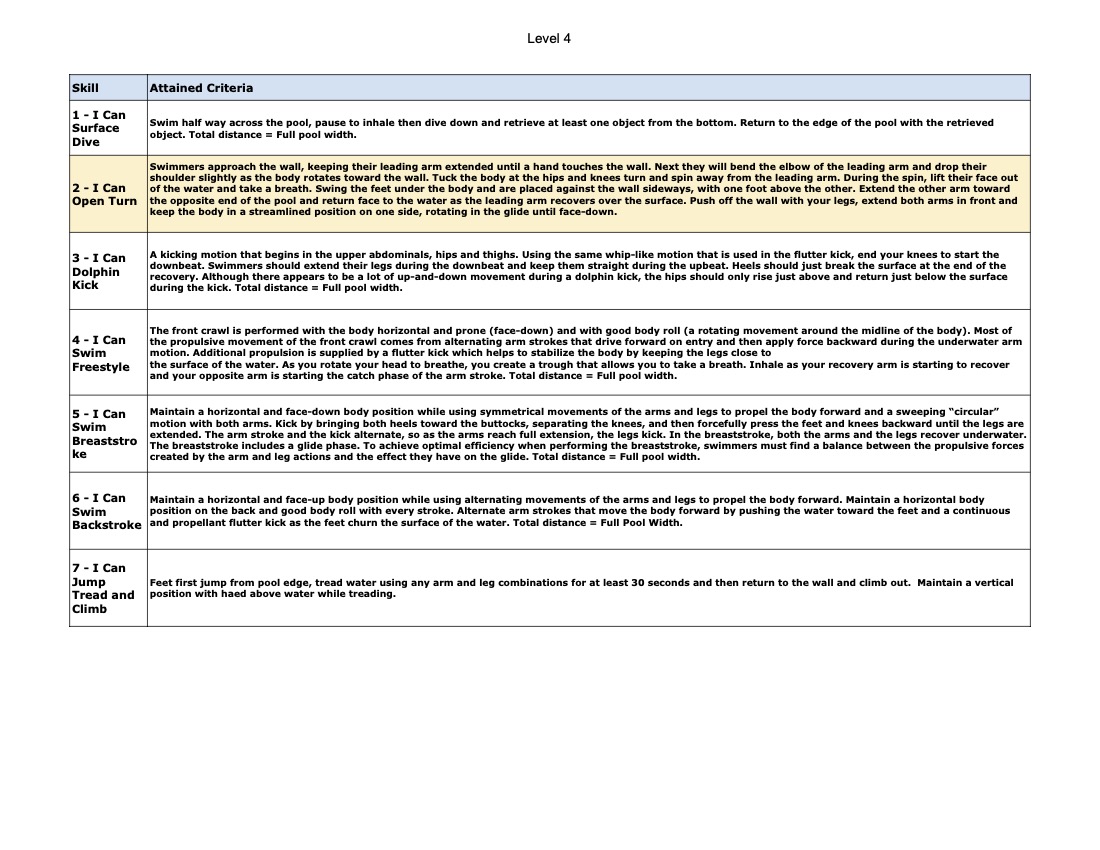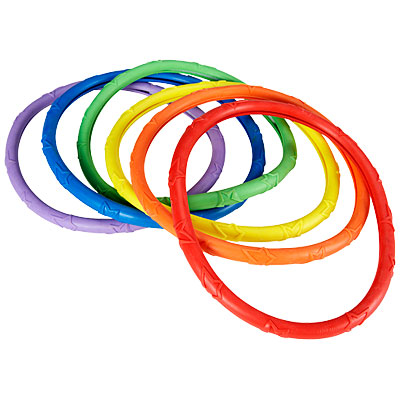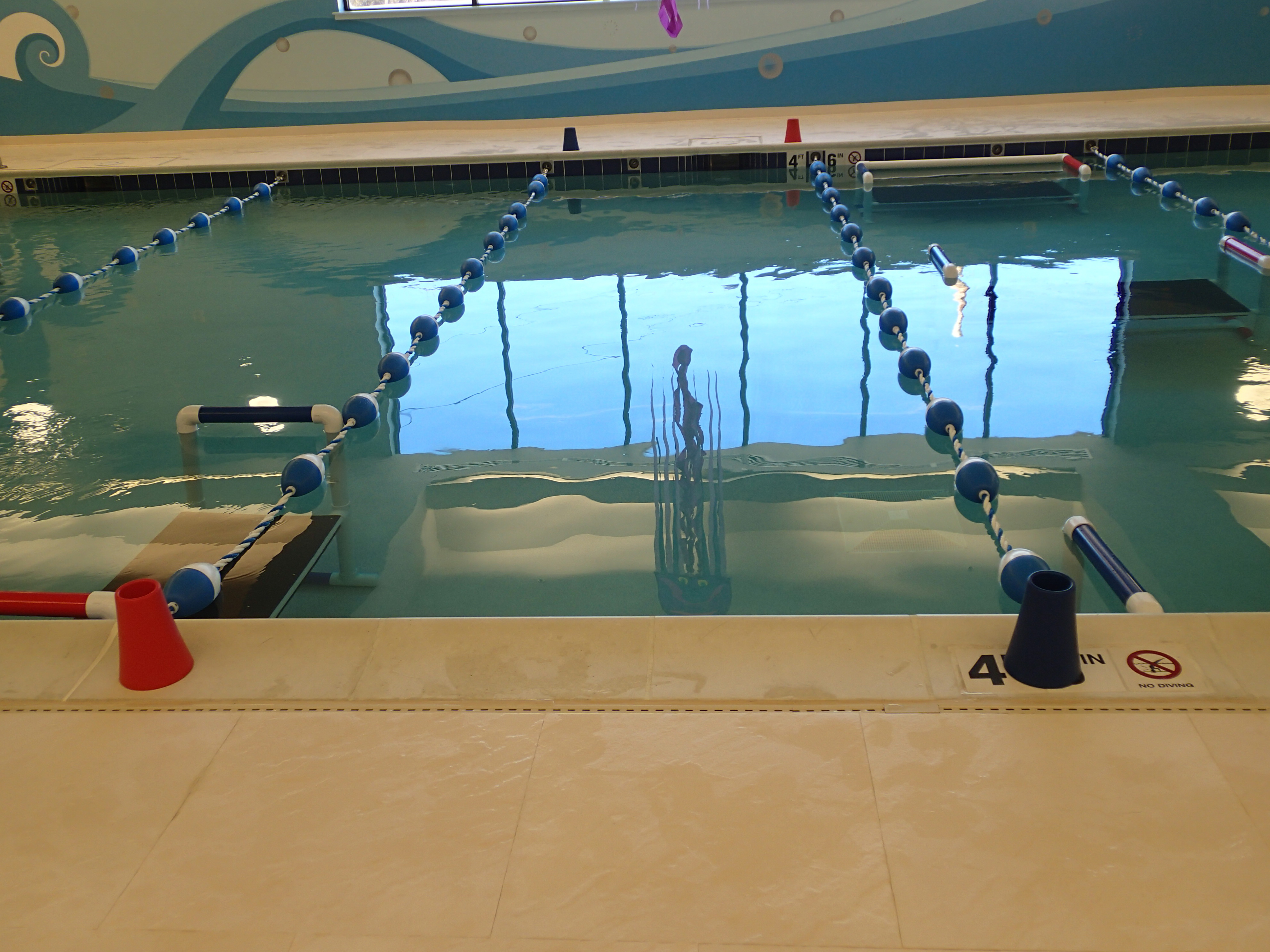Skills Why and How
I Can Surface Dive!
Why: For students to gain comfort and confidence with Breath Control and exploring the underwater world!
How: Place several objects at the bottom of the pool. One at a time have students jump in from the pool edge and change their body position to swim to the bottom of the pool. Encourage them to use breaststroke arm pulls to move the water out of the way as they are swimming for the objects.
I Can Open Turn
I Can Dolphin Kick!
Why: The Movement of the dolphin kick appears primarily in the Butterfly stroke, but can also be used as a technique to advance after a start or turn.
How:
- Push your chest a few inches downwards in the water, then release it.
- As you release your chest, push your hips down in the water, then release them.
- As your hips drive downward, let your thighs follow behind in the downward movement, your legs bend slightly at the knees.
- Then, as your hips move upward, straighten your legs to execute a whipping movement.
- Then let your upper legs follow along the hips upward.
- Start the next cycle. Press your hips downward again. Your legs will follow along with some inertia and your knees will bend slightly again during the downward movement of the hips.
- The initials goal should be to have both your legs move simultaneously.
I Can Swim Freestyle!
Why: Developing the proper Breath Control for Side-Breathing is a key technique for Freestyle as it allows swimmers to breath quickly and efficiently without interrupting their body position.
How: It is much easier to teach single side breathing to students as they are refining their stroke. Practice this technique by having them breath in one direction (for example only to the right) and then practice again having the breath in the other direction (only to the left). Remind students to inhale with one arm and exhale into the water with the other. Students should strive to take a breath every stroke to master the breathing pattern.
I Can Swim Breaststroke!
Why: Breaststroke is the slowest of the four official styles in competitive swimming. The fastest breaststrokers can swim about 1.57 metres per second. Although it is the slowest of the four competitive strokes, it is commonly agreed that it is by far the most difficult to do correctly!
How: Practice the stroke as a whole and give feedback where necessary.
I Can Swim Backstroke!
Why: Backstroke is one of the four swimming styles regulated by FINA, and the only regulated style swum on the back. This has the advantage of easy breathing, but the disadvantage of swimmers not being able to see where they are going. It is also the only competition swimming style that has a different start. The swimming style is similar to anupside down front crawl. Both backstroke and front crawl are long-axis strokes. In Individual medley backstroke is the second style swum; in the team medley it is the first style swum.
How: Practice the stroke as a whole and give feedback where necessary
Can Jump, Tread and Climb!
Why: Treading water is an important aspect of swimming that involves a swimmer staying in a vertical position in the water while keeping his or her head above the surface of the water. While in this position a swimmer could wave or call for help which is a key Safety skill!
How: Have students jump in one at a time and tread water for at least 10 seconds ( the goal is 30 seconds or more). Encourage them to hold their head and ears out of the water as they tread. Allow them to explore treading water by using any arm and leg combinations.
Skills Criteria
- Cones
- Sinking Rings




